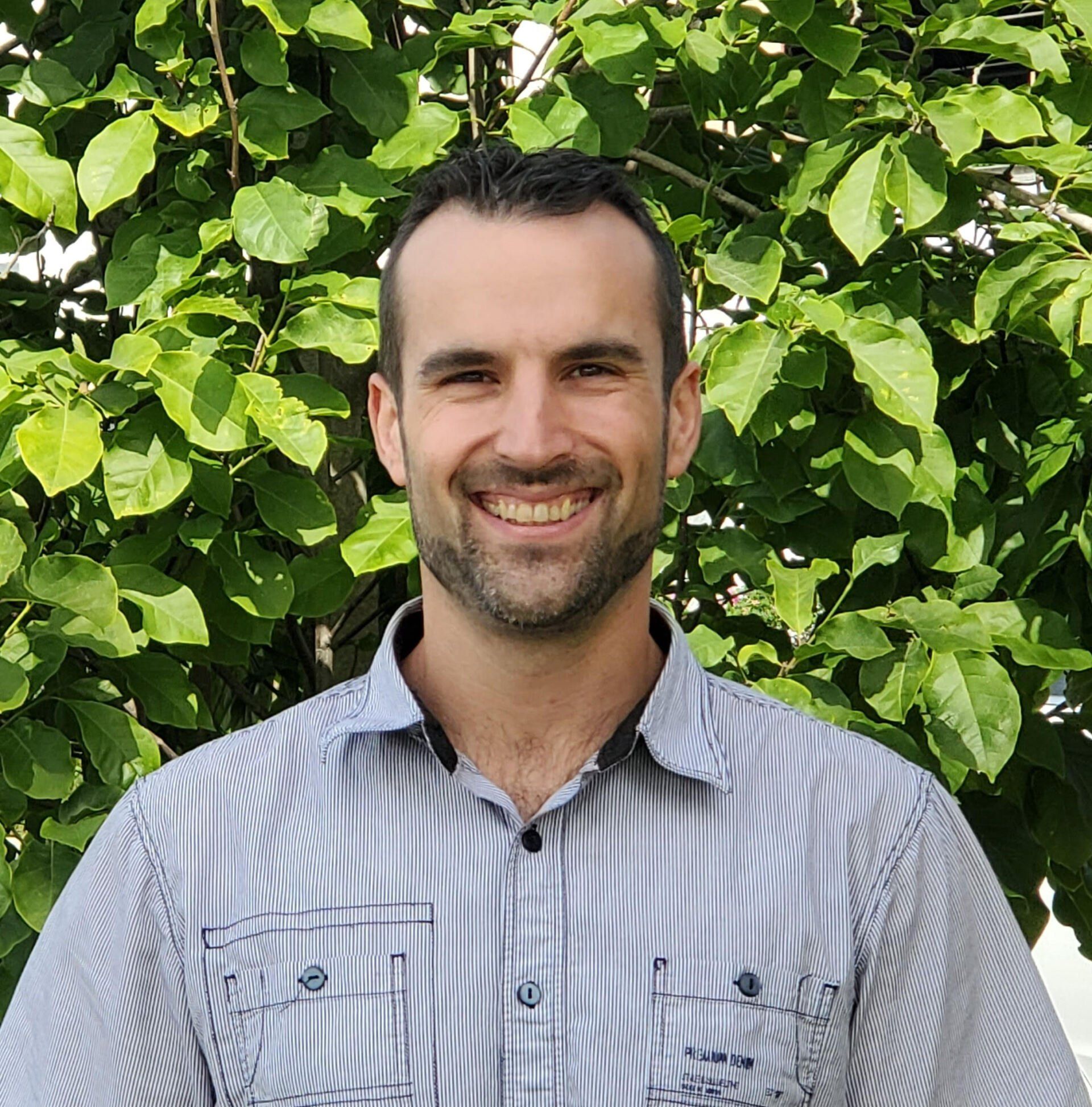What is Operational Excellence in 2020?
Rhys Green • June 6, 2020
Operational Excellence in 2020 (A Post Covid World)

Operational Excellence has traditionally been defined in terms of delivering value to the customer in alignment with strategy so well that it delivers competitive advantage.
To date "better" than the competition has been really difficult. Particularly if your a new entrant to the market. You might be more innovative with better idea's but to actually execute better than companies who have been dong what they do for many years is a real challenge. In 2020 everything changed. We've been calling it 'The Great Reset' because 2020 reset the clock on how businesses operate in almost every industry. Especially so in the service industry. What it means to provide a great experience for your customers and a safe experience has changed. The goal posts have moved and in a lot of cases they won't be going back.
We see this as the biggest opportunity to achieve an operational excellence advantage over your competitors than any other change in recent history (save the internet). With the transmission of disease now a consideration for every part of a business that humans come in contact with needing to be re-engineered. Starting almost from scratch on the continuous improvement ladder.
So what is Operational Excellence in 2020? As a frame work it has stayed the same. However there are implications for how this frame work is applied across the board.
Strategic Decision Making - 2019 set the stage for this, however 2020 has driven it home. Companies can't optimize exclusively for shareholder value anymore. They must consider the community, environment, employees, customers and shareholders and deliver considerable value to all of these stakeholders. This makes decision making substantially more complex with a far higher impact. Organizations will need to do a better job supporting their leaders and middle managers in developing their decision making skills. Luckily there is a fantastic body of work on decision making, one of my favorite books is ' The Decision Book
'. It has 50 different decision making models, fully illustrated that will help make decisions about everything from how much to spend on a gift to complex strategic decisions.
Culture -
Check out our '12 Culture Building Blocks' and it will become abundantly clear how culture has been impacted by the events of 2020. Diversity isn't a nice to have or competitive advantage anymore. It's table-stakes. The physical environment is completely different as remote work became a thing for everyone and the list goes on. We recently hosted a virtual round table with senior HR leaders from Aritizia, Smart Sweets and O2E Brands (1-800-Got-Junk?). They are all focused on answering questions like " how will we collaborate now?" & "How do we roll out change when we can't meet our people in person?".
Process Excellence - There are so many examples of actual process changes that 2020 has already driven. I think the biggest change will be a wider spread demand for process engineering skills for leaders outside the operations and strategy functions. As leaders grapple with eliminating racial bias from their recruitment processes & leadership programs as well as implementing new disease control safe guards the ability to map, re-engineer and document process will need to permeate every part of the organization.
Measurement -
Not only will we begin to see the introduction of new KPI's to help measure our transmission risk reduction activities but new benchmarks will need to be established almost across the board, most notably for productivity. I was speaking with a local barber shop who have 7 locations. they said their capacity has been cut by 40% due to the process changes they've had to make as a result of new Covid related regulatory requirements and they certainly aren't alone. Productivity will be a challenge for almost every service offering in market as they attempt to implement labor intensive cleaning protocols.
Product/Service Innovation -
In the cleaning business? You might find yourself quickly in the disinfecting business and that's just one example of many. Opportunity abounds and we'll see the innovation knock on effects take place for the next few years. Some of the innovation will result in brand new service offerings however the majority of the pressure will be applied to teams trying to deliver the same service levels they did before 2020. These organizations are going to need to find new ways to deliver the same value their customers have come to expect from them.
Quality Management -
Observation has always been a core tenant of a great quality programs. Social distancing blew that up and we've seen the impact really fast. Not just this but there's a new element to quality to manage. As we attempt to measure the effectiveness of our transmission risk reduction activities adherence to brand new processes organizations whose quality programs already have an effective calibration process will keep pace with this change just fine. Those more mature businesses with a static definition of quality will struggle to adapt.
Employee Engagement -
According to Falcon & Skillen who survey 1,350 front-line employees right in the middle of the Covid-19 shutdown 38.1% of employees would notify authorities if their employer wasn't following new regulations and only 60.1% of employees wanted to go back to work. This represents an immense challenge for employers as employees return to workplaces they've realized they don't want to be at. The best employers are getting ahead of this by actively involving their people in the process changes required to deal with the new work environment and helping them transition back in effectively with optional retraining programs.
Customer Experience Management -
Right now customers are still patient and understanding of what 3 months ago would have been considered intolerably bad experiences. Just last week I went to the bank to deposit a check (the kind you can't do online) after a 45 minute wait in line I was served from behind a perspex guard by a bank employee wearing a mask. We know what people want in an experience: Convenience, speed, low effort, friendly connections & it won't be long before their patience for sub par experience runs out.
Operations leaders have a significant challenge ahead of them. Luckily challenges and solving problems is what attracted most of us to the world of operational excellence. Now more than ever we have an opportunity to contribute to putting our organization ahead of the competition.

1. Make faster decisions Waiting is 1 of the 8 types of waste. If you’re unfamiliar, these are like the 7 (or 8 I guess) deadly sins of efficiency. There is seldom a Team Operations workshop that goes by without 80%+ leaders attending identifying waiting on decisions in their top 3 types of team waste. The quicker we can make decisions the less down time a team member who has a small breadth of tasks to work on and nothing to switch to, will have. For those team members who can switch tasks there is still a cost. Some studies have cited up to 40% productivity loss due to task switching. So if we can make fast decisions and help keep your team focused in the moment there is huge productivity upside. 2. Create and guard meeting free time Shopify recently made headlines for cutting close to 400k of hours out of their business by reducing meetings. You don’t have to save that many hours to have a meaningful impact on your team's productivity. You also don’t need the entire company to cut out meetings to have an impact. Even having a rule that’s specific only to your team like, Wednesday mornings between 9 & Noon we don’t accept meetings, can have a huge impact. On a team of 10 in a large organization stringing together 30 hours a week or productive time will change the game. But don’t just take my word for it. ‘Meetings and More’ published in 2014 in the Journal of Occupational Health Psychology found that by reducing meeting load, teams were able to reduce the associated exhaustion and increase overall productivity significantly. 3. Find individual time of day productivity There’s a great book on this very topic by Dan Pink, which I’d highly recommend. In case you don’t have time for reading books. Which, let’s face it, you don’t. Here is most of what you need to know. There is a theory that we all have times of day at which we are most likely to peak our productivity. I know I personally have a golden window (which is what I called it before I knew it was an actual thing, researched by science types) between 7am and 11am when I am at my most productive with the least amount of effort. The productivity gains can be huge in helping people find their own peak productivity timing. There’s even a free online survey they can take to help them figure it out more easily. Although my experience has been that once you talk about this concept most people are like “ahhhhh that makes so much sense, I think mine is x”. 4. Teach them about habits I used to smoke… I know gross. And two things helped me stop. I noticed that people who drove nice cars didn’t smoke and I wanted a nice car I learned about habits and how to manage them. Now I don’t know if point 1 is true, or just something my brain did to help me. If it’s the latter, thanks brain. But I do know point 2 has a mountain of evidence to support its efficacy (including my own personal experience) in increasing productivity and helping teams of people hit their goals. Again there are some great books on this. But the basics of what you need to know are in the image of the habit loop (from The Power of Habit). Additionally my experience in talking to team members about habit change says there are two places you’ll need to guide them most. Habits are better shifted not removed. If you’ve got a habit that’s not serving you. You’re better off trying to replace it than stop it. Remove Barriers. We’re all pretty lazy by nature. So if we really want to set a new habit we need to remove the things that make it harder to do. Kind of like that episode of the Simpsons when they lose Homer but Marge knows he will be at the bottom of the hill. Because he will always choose the easiest way. We’ve gotta make the better habit the easier habit. 5. Help them see their habits Tasha Eurich talks about self awareness. Her stats highlight just how self aware we think we are. And just how self aware we actually aren’t. To that end, through active observation and feedback we can help our teams improve their productivity by showing them the habits that aren’t serving them, that they probably can’t see. Habits are funny like that. Because we do them automatically and they’re often triggered by something other than our intent, we don’t see them. Then we wonder why we can’t hit our goals. If you’ve got a sales person whose first action upon arriving at the office is to grab a coffee and chat with someone for 20 minutes, they’re probably not trying to get out of making their dials. They’re probably just set in a habit that’s not serving them. Show them that a better habit would be to sit at their desk right away, get their dials done and then reward themselves with a coffee at the end to reinforce the loop. 6. Get rid of non-essential tasks Have you ever had a team member leave and been surprised by some of the stuff they were working on? We all have, don’t worry. I call it Task Debt. But I’m sure someone, somewhere has researched it and has a better name for it. And we all have it. It’s so common, particularly for long tenured and diligent team members to just collect tasks and keep doing them without really thinking about whether they still need to get done. It’s worthwhile doing a periodic task audit. Make sure you’re very clear at the beginning, that no one is getting fired (unless they might be in which case don’t lie about it). Then have all your team members keep a task log for a week or two (whatever time frame makes sense for the timelines tasks typically recur on, on your team). Go through them all as a group and include any stakeholders you’re team is delivering stuff to. Rate them on impact and effort. Get rid of all the low impact items. Comment Gimme and I’ll DM you the task log we use @trailblaze Partners. Repeat every 6 months or so. 7. Be clear about what good looks like Kinda the same reason as point 6, but on the non-recurring end of the spectrum. You ask a team member if they think the team needs to hire a new team member. 3 weeks later you’ve forgotten you asked for their opinion and they show you the deck they’ve prepared that makes the business case for the new hire, a list of potential candidates and it’s all presented with beautiful graphics and a wonderfully curated soundtrack. Should have been more clear you were just looking for a quick gut check. Again we’ve all been here. On both ends. The best way to avoid this is to be really clear about what you’re asking for and what good looks like. In this case, good was just “hey what’s your immediate reaction to this thing”, not I need a deck I can take to the board so we can hire this person ASAP. 8. Make Resources Easier to Find “Oh yeah, we’ve got that somewhere. Just ask Jimmy I’m sure he’ll know where it is” Your team member then goes on to spend the next hour looking for the JD template, when they could have probably just written a completely new one in that time. I’m terrible for this one. Jerry is great. Our shared folders in Google Drive are so well organized. Now I can never figure out the organization system. But that’s a lot less to do with its quality and a lot more to do with my memory for those types of things. All that’s to say, things like folder systems, document naming conventions etc can save hours every day. Particularly if you have a team that needs to reference a lot of different documents really regularly. It also guards against losing Jimmy’s knowledge when he leaves. 9. Remove Steps from tasks Short cuts get a bad rap. And similarly to habits, when we’ve been doing something a certain way for a long time it gets really difficult to see it for what it is. My wife gives me shit about this all the time. I drive the slowest way home from picking our girls up from school so often. Mostly because I’m just not concentrating and taking the route I have always taken. She is always hunting for the fastest way, finding new roads with more lanes or better turning lights. Process is the same. For the most repetitive and time consuming tasks. Sit down with your team members and go through them together step by step. Ask yourselves the question, why do we need this steep? What does it add for the rest of the process? Could we deliver the same value without it? The answers to these questions will help you decide what you can get rid of and what has to stay. 10. Give them more breaks/insist they take breaks - Recharge policy In 2016 there was a study published proving what most of us already know. Taking breaks helps us get more done. It was called Give Me a Better Break. The irony here is that I have now been writing for about 3 hours straight. But it’s ok, I’m in my Golden Window. So how can you help your team members? If they’ve got a schedule where some specific type of work needs to be covered at a certain time strictly e.g. retail or call centre. Just schedule more breaks for them and give them more meaningful stuff to do on the break e.g. go outside for a walk. If not, then it’ll likely be up to your team members to decide when they take breaks. It can be as simple as sitting down in their next 1:1 and going back through their calendar for last week to see how many breaks they took. Or just asking from time to time, “when was the last time you took a proper break?” Not only is it good for productivity, but it’s great for the humans you’re working with! 11. Support Mental Fitness I’d be remiss not to talk about Mental Fitness here, but given that this is post 11 of a 12 post series I’m not going to be able to get too deep into it. Suffice to say, things like exercising and meditation have evidence to support their positive impact on productivity (Conner & Puetz 2018, Serhan & Sedak 2019) and make up just some of the many tools in the Mental Fitness tool belt. 12. Matching Work Types to Intrinsic Motivation This last one is a little less tactical, but no less impact-i-ful (see what I did there?) When we get to know our team members, what they love to do, when they’re working but feel like they’re at play, we can begin to help them find more of those tasks. This is what’s known as intrinsic motivation. The stuff we do just because we like to, because it feels good, because it taps into our higher order needs. Things like the need for Autonomy, Purpose and Mastery. But this is why I saved it for last. It’s probably the most difficult to do well. It requires a very open and honest relationship with your team members and a role that’s exceptionally well suited to what they’re good at/like to do.. There’s way more to it than I could fit in a single short form post like this. But it’s worth a mention, and will hopefully get you going down that lane to learn more about it yourself.

Corporate culture is a critical aspect of any organization. In fact companies with highly rated cultures and values outperformed their peers on EBITDA and Revenue growth over a four year period at a factor of 4:1. We believe this performance is driven by the significant role culture plays in shaping employee behavior, attitude, and performance. However, creating a high performance and engaging corporate culture is not an easy task. It requires careful planning, execution, and continuous improvement. This is where corporate culture consulting companies come in (Like us at Trailblaze Partners, or the competition over at Korn Ferry or BCG). Corporate culture consulting companies specialize in this type of work. Well most of them. Some of them are more generalists with a practice area, but they’re pretty good too. They work closely with businesses to identify their unique culture needs, develop strategies to improve their culture, and implement changes that align with their overall business goals. Some of the key services that corporate culture consulting companies offer: Culture assessment: Before any changes can be made, corporate culture consulting companies will conduct a thorough assessment of the organization's current culture. This includes conducting surveys, interviews, and focus groups to gain a better understanding of the organization's strengths and weaknesses. Look carefully for companies who are able to give you some kind validated way to measure your values too. It’s rarer than you think and infinitely valuable. Check out our Culture Canvas for more about the strategic elements of corporate cultures. Culture strategy development: Based on the findings from the assessment, corporate culture consulting companies will develop a tailored strategy to improve the organization's culture. This includes identifying key areas for improvement, setting goals, and developing an action plan. We often talk about it as helping companies decide, where are they going and how do they get there? We use the Culture Canvas to help us show the future state and then we use our Culture Formula to plan out the building blocks. Lots of other companies will do something similar like Korn Ferry with their Culture 360 approach or Bain with their ‘Integrated Approach’ image below.

MELODIE YONG - REGIONAL MANAGER, CULTURE & COMMUNICATIONS @ PROVIDENCE HEALTH CARE Melodie never had that 5 year or even 10 year plan when she was figuring out what she wanted to do when she grew up and maybe that was a good thing. Working in culture and communications has been an opportunity to bring together so many of Melodie’s passions. Starting in health care with Providence Health as a Registered Dietitian and moving into health care leadership as an operations leader and then into change and communications work on a multi health authority project has all led her to her role of developing people, communications and building a healthy culture in Health Information Management (HIM). HIM is a leader in the collection, storage, and distribution of patient information within British Columbia. Our dedicated team of professionals are some of the first points of contact at health organizations sites. Working within a consolidated department, HIM (www.himconnect.ca) is part of a health organization where employees physically work in one of the four lower mainland health organizations (Fraser Health, Providence Health Care, Provincial Health Services Authority and Vancouver Coastal Health) and are employed by Providence Health Care. This role evolved when it became clear that with 1400 employees geographically spread over 40 locations across the province, it was crucial for HIM to create and build their own identity and sense of belonging within teams and as a larger department as well as to be able to share with those outside of HIM the essential role they have in the health care system. Creativity, curiosity and connection have all been essential elements that have guided Melodie through this journey, sprinkled with endless gratitude. " Culture work is never ending. You're never finished and there's always opportunities to do better. Culture building is about staying humble, being curious and listening to your people, always ." - Melodie Yong

NATHAN NEELS - CHIEF EXECUTIVE OFFICER @ HARMONIC MACHINE INC. Nathan Neels is the CEO of Harmonic Machine Inc, one of North America's fastest-growing advanced CNC machining companies. Starting from the ground up, Nathan began his career at Harmonic as a CNC Machinist learning hands-on all the critical technical aspects of machine manufacturing. After excelling at that role, Nathan was promoted into General Manager, where he built the company from 4 to 30 employees. With massive growth as General Manager, Nathan purchased Harmonic and become the CEO in 2015. Under Nathan’s management, Harmonic grew exponentially with key deliverables of 30% growth per year in sales, keeping gross margin over 30%. Nathan’s success as a leader has been his focus, building an award-winning, recognized positive corporate culture. For all his success as a leader, Nathan and Harmonic have been recognized by many leading publications and organizations, including being named Americas' Fastest Growing Companies, Canada’s Top Growing Companies, one of the best places to work in Canada and many others.

JENNIFER BENNET - SENIOR PEOPLE & CULTURE CONSULTANT @ TRAILBLAZE PARTNERS This month we thought we'd turn the spotlight inwards, on our very own Jen. Side note, she's available for interim and fractional opportunities starting at the end of September. She's been a people and culture leader for a long time and has learned a thing or two along the way. Jen started her career in the retail industry 25 years ago as an HR Manager for then startup Lush Cosmetics. Over the next 13 years, she led the People & Retail Operations teams driving the rapid shop expansion across the Canadian and US markets. Since then, Jen has worked with various startups and big box companies across a multitude of industries in tech, construction, franchising, and retail. She is focused on delivering the people strategy and framework needed to succeed while developing leaders and shaping organizational cultures that support and inspire people to do their best work every day.

BREANNA WALKER HEALTH & WELLNESS CONSULTANT @ CITY OF VANCOUVER Breanna started her career in the clinical realm because she has always been passionate about the health and well-being of people and communities. However, after many years working as a Kinesiologist at InspireHealth Supportive Cancer Care, Breanna made the intentional decision to enter the field of workplace well-being; during her time supporting people in their return-to-work following treatment for cancer, Breanna became fascinated by what was happening within a workplace that caused it to either support or hinder someone’s recovery. And even more so, Breanna started to wonder what it was about some work cultures that made people eager to return to their roles or to describe their work as an essential aspect of their well-being. Now, as the City of Vancouver’s Health and Wellness Consultant, Breanna has the honor of spending every day exploring these questions and supporting the health and well-being of the individuals who work so hard to make Vancouver the amazing city that it is. In her role, Breanna develops and promotes employee well-being resources for City staff; her current priorities include enhancing on-site mental health support for teams, connecting employees to culturally competent mental health resources, and co-leading the implementation of the National Standard for Psychological Health & Safety in the Workplace.



